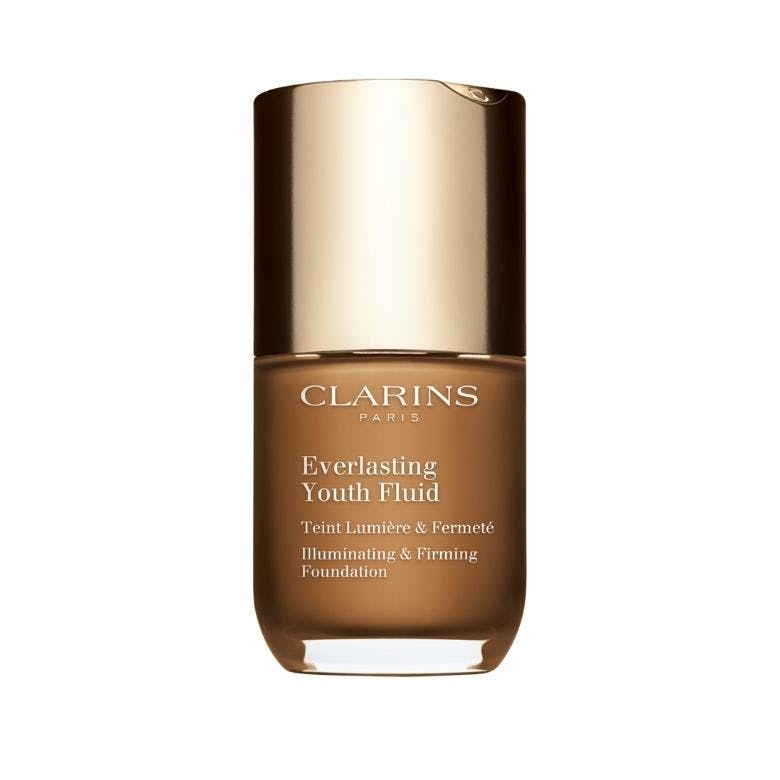Foundations For Dry Skin: Everything You Should Know
5 minutes read
The best foundation for your dry skin could be a cream, a liquid, a tinted moisturiser, or it could even be no foundation at all. It all depends on your skin type and the look you’re trying to achieve. Foundation is meant to act as a base, evening out and prepping the canvas (your face) for other products to come.
Get it right and all other make-up shines, but even the most beautifully applied eyes and lips will fall flat if your blank canvas is uneven, patchy or badly applied.
And to get it right, you must understand your skin type. If you have a dry skin type, your skin doesn’t produce enough sebum (oil). The upsides are smaller-looking pores and never getting greasy by mid-day. But the downsides include dry patches, flaking, tightness and generally a lack of smoothness.
So, how do you make the most of what you’ve got? Let’s explore.

How to get foundation to look good on dry skin
Use the right pre-makeup skincare
We’ll never stop saying this: skin prep is the most important step in make-up application. “Get your skincare right and make-up instantly looks better,” says Charlotte McHale, Clarins Training Manager.
To balance your dry skin, layer products that cater to this skin type. For instance, the Hydra-Essentiel Rich Cream, £38 by Clarins has a thick balmy texture that instantly soothes very dry skin. Face oils are also great as they help balance the low levels of sebum. We like the Clarins Santal Face Treatment Oil, £38, is made with 100% pure plant extracts that helps skin glow with good health.
Don’t forget the primer. Choose this depending on how you want your foundation to look in terms of finish.
McHale advises: “Use a moisturiser that targets your dry skin and then choose a primer that suits the appearance you want, rather than to treat your dryness – that’s your moisturiser’s job.”
Clarins SOS Primers, £30.50 – the White is great if you like a luminescent finish. Or choose Clarins Instant Smooth Perfecting Touch, £28 if you prefer a soft matte, pro-age finish. Neither contain oils; they merely enhance the appearance of the make-up that you apply.
Ditch matte for dewy
For dry skin, ideally, you don’t want to go for traditional matte foundations, unless you’ve wearing a really rich moisturising primer underneath.
But this also depends on the texture of your skin. “You could have a dry skin type but a generally smooth texture,” says McHale. “In which case, the matte foundation will probably look okay, but could feel uncomfortable. I would then recommend the Everlasting Foundation, £34 by Clarins because it’s formulated with a vegetal micro patch, which gives you continuous hydration.”
But if your skin shows any signs of flaking, take a different approach. “If you love that matte look, but your skin is flaky, my advice would be to embrace the dewy finish for now and just powder the areas you can’t bear to see shiny. But in the meantime, work on the underlying skin condition,” suggests McHale.
Exfoliate often
McHale uses a wall decorating analogy to explain the importance of exfoliation. “If you’re going to paint a wall straight onto plaster, there will be lumps and bumps all over it. So, you always sand it down first. That sounds a bit extreme, but that’s essentially what exfoliation is doing, but in a gentle way.”
People with dry skin need to exfoliate more often than other skin types. Exfoliation helps get rid of dry cells lingering on the surface of your skin and encourages the renewal process. Twice a week is a good rule but opt for once a week if you have sensitive skin.
Skip foundation completely
Unlike a blemish that can (to some extent) be covered with make-up – dry patches and flaky skin look worse with make-up on top. So, if your skin is going through a particularly rough patch, consider going foundation-free. Instead, use concealer on any specific areas like the under eyes or blemishes that you may want to cover. Perhaps go for a tinted moisturiser, or try a primer and concealer combination.
Use a setting mist
Powders aren’t ideal for dry skin as their job is to mattify and soak up the grease. If you want to set your make-up, try a setting mist instead. This will also give you an extra dose of hydration and make your skin look hyper-glowy.
Try: Clarins Fix’ Make-Up, £24 as it contains aloe vera and allantoin: both intensely moisturising and soothing plant extracts.
Avoid shimmers
Formulas with shimmer particles can bring attention to dry patches or textured skin. Look out for ‘radiant’ foundations loaded with tiny glitter particles. Get your glow from creamy, luminous textures instead.
The best foundations for dry skin
Clarins Skin Illusion, £33

With a hydrating and buildable formula, Clarins Skin Illusion, £33, is perfect if you enjoy light to medium coverage. It feels fresh and lightweight on the skin, and the plant extracts in it offer a dewy glow without feeling greasy.
Clarins Everlasting Youth Fluid, £37

Alternatively, if you like a little more coverage (but still loads of luminescence), reach for the Everlasting Youth Fluid, £37 by Clarins. The formula contains Clarins’ anti-pollution complex that protects skin from environmental aggressors. Plus, the plant extracts (including chicory and red jania extract) have firming and hydrating properties.
Pro tip: Apply your foundation starting from the centre of the face, where most people need the most coverage and then blend outwards. This is because most people – dry or otherwise – tend to need less coverage along the periphery of the face.
Next Read: How to apply foundation like a pro
Sign up for our newsletter
We will keep you in the loop for special offers, exclusive gifts and product news.

